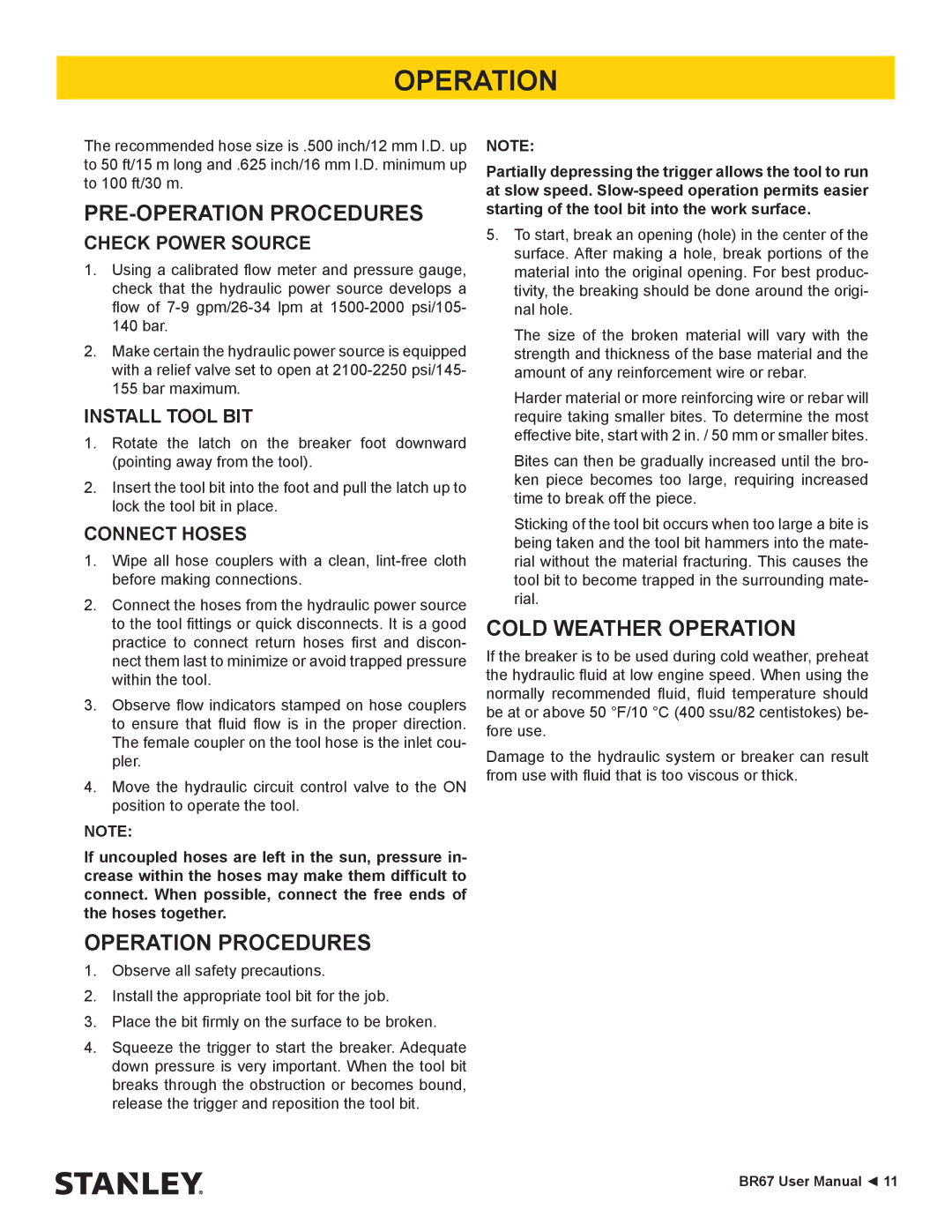BR67 specifications
The Stanley Black & Decker BR67 is a cutting-edge tool that exemplifies the company's commitment to innovation and performance in the power tool industry. This robust and versatile tool is designed for both professionals and DIY enthusiasts, providing unmatched reliability for various applications.One of the most notable features of the BR67 is its powerful motor, which delivers consistent performance across tough jobs. This motor can provide sufficient torque for a range of applications, whether you are working on woodworking, metalworking, or construction tasks. With its impressive power output, users can expect efficiency and speed, ensuring jobs get completed on time.
The BR67 also incorporates advanced technology aimed at improving user experience. Its ergonomic design ensures that it is comfortable to handle, allowing for prolonged use without causing fatigue. The handle is designed to provide a secure grip, reducing the risk of slippage during operation. This design feature is crucial for maintaining precision and control, especially in intricate projects.
One of the standout characteristics of the BR67 is its versatility. Equipped with various settings and modes, it can adapt to different materials and applications easily. Whether you need to drill holes, drive screws, or undertake more complex tasks, this tool can adjust to meet the demands of each project. This adaptability makes it an excellent choice for professionals who require a multi-functional tool.
Moreover, the BR67 boasts a robust build quality, ensuring durability for extended usage. The materials used in its construction are designed to withstand wear and tear, making it suitable for demanding environments. Additionally, this tool's maintenance-free design means less time spent on upkeep, allowing users to focus on their work.
In terms of safety, the BR67 is equipped with multiple protective features, including overload protection and an integrated safety switch. These elements help to minimize risks associated with power tools, making it a safer option for users.
Overall, the Stanley Black & Decker BR67 presents a powerful combination of performance, versatility, and user-friendly features. Its engineering reflects the brand's reputation for producing high-quality tools that meet the needs of various professionals and enthusiasts. Whether in a workshop or at a job site, the BR67 is an invaluable asset that enhances productivity and encourages precision in every task.

